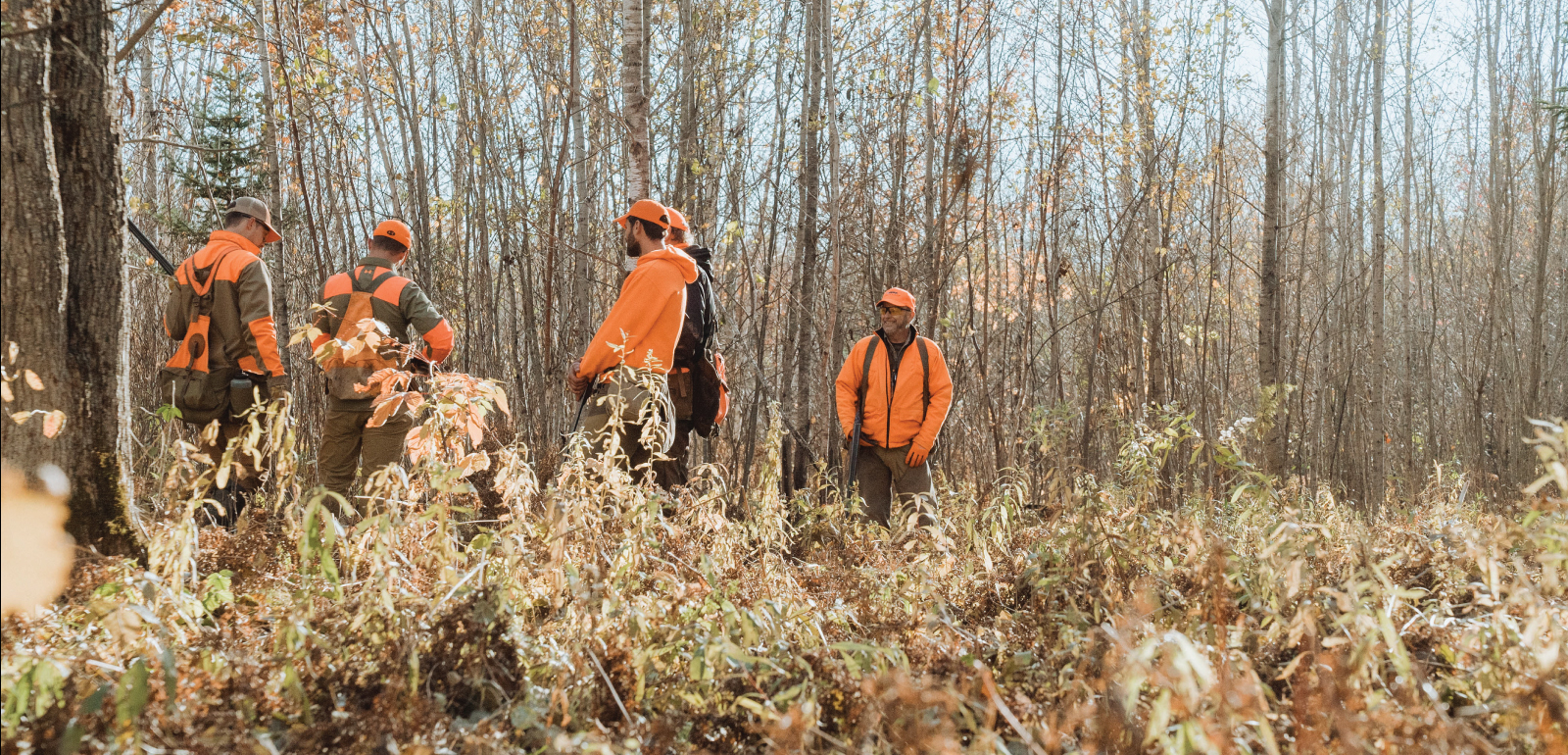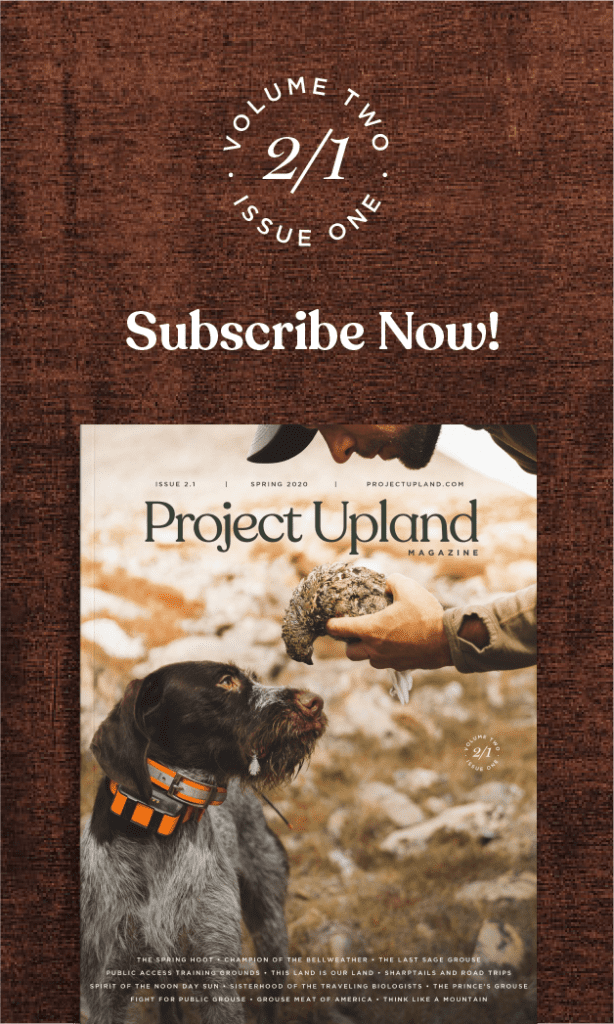How does hunting culture appeal to a belief-driven audience in an age of polarization?
We do not have to look far to find aspects of our hunting culture that fall into what plenty of moderate people would call extreme. To each his own, as this is America after all. But like many things, marketing across generations changes once certain topics are addressed. We have often assumed, even created, a culture that goes so far as to think there is a specific political party associated with hunting. That is not true.
There are, however, some commonalities nevertheless. The largest being the issues of conservation (in this case for upland birds). The larger gaps are exposed when speaking of gun rights and access to public lands. The data laid out in this article was based on the following question.
Of these three issues, which one is the most important to you? (Select One)
1. Access to public lands for hunting
2. The Second Amendment
3. Conservation for Upland Game
Conservation Reaches Across Generations
Generation X, those born between 1980 and 1965, cited that “conservation for upland game” was the most important issue at a rate of 48 percent–the highest of the three generations surveyed for this data set. Following at number two was Millennials, those born between 1996 and 1981, at a rate of 45 percent. Lastly, Baby Boomers, those born between 1964 and 1944, came in at a rate of 41 percent.
The largest gap from Generation X to Baby Boomers is still a 7 percent gap, the smallest being Millenials to Generation X at 3 percent. It is fair to say (once responses #1 and #2 are investigated) that conservation seems to be a commonality for many in these generations. In the upland space there are plenty of birds that face dire decline like the sage grouse, sooty grouse, ruffed grouse and American woodcock just to name a few. In fact, one could argue that the upland community faces some of the greatest conservation challenges in the hunting culture.
While we will often argue that conservation is a great awareness campaign, it is not a great recruitment campaign. (Read: The Message of Conservation Failed). It is, however, a great cohesive message to communicate to current and past hunters. It is in fact something to stand for in a day and age that requires having clear cause.
The data remained relatively stable when looking specifically at conservation non-profits. Case in point: memberships to Pheasants Forever and the Ruffed Grouse Society only fall into a variation of between 1 and 3 percent across these three generations.
Access to Public Lands
Access to public lands seems to have the most steam inside the Millennial age group. At 36 percent, Millennials cited this as the most important issue. Second was Generation X at a rate of 27 percent, and last at 23 percent for Baby Boomers. A 13 percent spread starts to show a shift in issues between generations.
The reasons can be both obvious–and less obvious. First, the same survey showed that 89 percent of Millennials do all or at least half of their hunting on public lands. That number falls to 80 percent for Generation X and then to 78 percent for Baby Boomers.
The data based on rate of hunting public lands came from the following question:
About how much of your hunting is done on public land?
1. All of it
2. Most of it
3. About half of it
4. Barely any of it
5. None of it
The most glaring gap here comes when we look at only the answer “All of it,” to which 13 percent of Baby Boomers, 20 percent of Generation X and 29 percent of Millennials agreed. At over double the rate of Baby Boomers, this can certainly point towards more recent issues in organizations like Backcountry Hunters & Anglers (BHA) and their younger demographic where public access looms as one of their largest issues.
When looking at the non-profit membership data in this survey, we found that 39 percent of Millenials were members of BHA. That number falls all the way to 9 percent for Baby Boomers and 22 percent for Generation X.
The Second Amendment
Perhaps nothing is more polarizing an issue in our culture than the Second Amendment. This issue, in fact, reflects the largest generational gaps according to this survey. Baby Boomers cited this as their most important issue at a rate of 36 percent, and it came in second place for that generation. As stated above, first was conservation for upland game at 41 percent and in third place was public access at 22 percent.
That number falls by 11 percent to 25 percent for Generation X, coming in at third place among those citing it as their most important issue. However, it holds only a 2 percent gap as an issue for this generation regarding public access which came in at 27 percent, conservation still holding a clear lead at 48 percent.
The number falls again for Millennials, coming in at only 19 percent and holding third place as “the most important” issue to that generation. This exposes the greatest gap between Baby Boomers and Millennials with a 19 percent difference or double the gap (36 percent for Baby Boomers).
It’s important to note that people were only allowed to select one issue as their most important. This was intentional to show where people had the most passion when forced to choose. In many cases people still find these alternate issues important to them, just not as important.
But again looking at our non-profit data from the same survey we find that 40 percent of Baby Boomers are members of the National Rifle Association (NRA) while only 13 percent of Millennials are members. Generation X came in at 25 percent.
How Does this Matter?
An important ongoing marketing method in many aspects of American culture is “Cause Marketing.” To put it simply, it’s a marketing effort between a for-profit and a non-profit. The results of such marketing is a mutually beneficial relationship. But increasingly the landscape of American culture is starting to make these cause marketing campaigns fall less into the “one-size-fits all” idea of marketing. While it still seems to hold true for the conservation segment of the hunting industry, lines become more blurred as we move onto public access and the Second Amendment. And as stated above, conservation is not a sales pitch to recruit hunters.
Belief-driven Buyers
There was a time in the not-so-distant past where the idea of brands taking a social stance would be considered suicide. Many will probably recall Nike’s Kaepernick campaign that many analysts at the moment of the campaign’s inception would say that it was in fact brand suicide. It birthed the counter movement #BoycottNike and their stock bottomed out overnight as investors panicked at this bold marketing move.
But then Nike’s stock surged as their sales rose to their greatest gains from a marketing campaign in their brand’s history. Many cite it as the first large example of the age of “belief-driven buyers.” It’s not to hard to think that age is true with an increasingly polarized culture.
A 2018 survey by Edelman Earned Brand showed a staggering two-thirds of consumers bought into brands based on social or political positions. Nike had done their homework and continues to be a marketing team worth studying.
But this begs an even greater question for the hunting culture. As we deal with decline in hunter numbers which has spawned the R3 movement, we find ourselves with elephants in the room. How do we as a culture appeal to a belief-driven audience? How do we as community face the obvious factions that are starting to emerge as a result of these belief-driven times?
Conservation Issues That Expose Further Generational Gaps
Although we have shown generational agreement with this audience concerning upland game bird conservation, this alters once citing key conservation issues. In our 2019 survey we took a look at two major “belief-driven” conservation subjects–non-toxic shot and climate change.
When it came to non-toxic shot it showed that 23 percent of Millennials were voluntarily (meaning not required by law) using only non-toxic shot. As for Baby Boomers, 13 percent cited using non-toxic shot in a voluntary manner. This 10 percent gap starts showing significant shifts in “belief-driven” mechanisms.
Furthermore, 90 percent of Millennials (who answered the question) cited that they either agree or strongly agree that climate change is having a negative effect on upland game. And 91 percent are citing climate change as real, while 58 percent are saying it’s man-made. On the Baby Boomer front those numbers fell to 74 percent believing climate change is having a negative effect on upland game and over double at 21 percent believing climate change was not real.
We all want the clean answer, the “one-size-fits all.” But expanding the base of hunters in the United States is going to come at a great cost to our past culture. We are at a crossroads where obvious truths are the hardest truths to the future of hunter recruitment. This cannot be “save hunting but only on my terms.” I urge everyone for the commonality of conservation that we save hunting no matter what the cost, for the wildlife and environment we love. And so that we can adhere to one important moral lesson that is easily applied to hunting: “We Do Not Inherit the Earth from Our Ancestors; We Borrow It from Our Children.”




